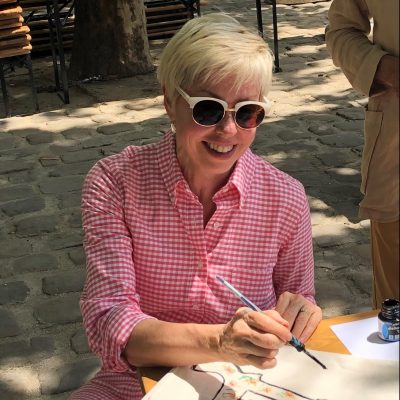12 Lifelong Learning and the ePortfolio
Charlette Padilla
My name is Charlette Tedersa Kareiva Padilla. I’m a Mexican–American woman and a native of Tucson, or what many locals affectionately call the “Old Pueblo.” Members of my family have been here since Arizona was still a territory. I proudly count suffragists, newspaper editors, teachers, and soldiers among my ancestors. I take pride in my family’s accomplishments and community work, especially those within the realm of education. My mother, aunts, and siblings have served as educators in the Tucson community. At any family gathering, there were always animated conversations on education. Though there were differences of opinion, everyone agreed that education was an asset that never can be taken away. Education affords each student an expansive gallery space to which they add pieces of art throughout their lives.
While this background provides some insight into who I am, my history alone doesn’t explain why I’m here at UA. I’m here because of the example set by my mother, who was one of the first Hispanic women in Tucson to graduate in 1946 from the UA with a college degree. My mother taught conversational Spanish to other teachers and to her own students years before the bilingual education movement took shape. During the 1950s and 1960s, English was the only language that was permitted in the classroom. I mention this because she helped me hone my own Spanish–speaking skills and instilled in me values of integrity as well as personal and social consciousness. She taught me to accept the differences in others.
Perhaps most importantly, my mother was a sensitive and perceptive teacher. She instilled in me the art of education that she utilized in her teachings. Mother made education an expression of something larger than tests and grades — something more coherent. The spirit of learning sometimes seems disjointed in the beginning, when experiencing a new concept. However, it can be crystalized once questions are raised and visual and personal inspiration are guided to answer the questions. What I mean is, a student’s mind is not a blank slate but a gallery full of their “works of art,” such as images and experiences from their lives. This was the art of my mother’s teaching: allowing students to display their learning using feedback and reflection.
At UA, I primarily teach courses about fashion. By definition, fashion is already diverse in design and reach, not only culturally, but in its appeal to the various markets designers seek to attract. Fashion highlights the product — clothing and accessories — to become the narrative of the wearers’ own story. Fashion reflects a form of life, a style, a mode of being. Fashion must address designs for the elderly, plus-sized, non-gendered clothing, and clothes for individuals with different functional needs. Creating clothing requires learning how to be more responsive to people’s differences, not only culturally but also physically. Fashion should challenge us to work with integrity and social consciousness, those qualities that my mother instilled in me.
In 2007, I began to develop the UA fashion minor, which would eventually be taught online. The Gen Ed course FITS 204 was one of several courses in a new modality called “online learning.” At that time, we were experimenting with ePortfolio, encouraging students to use personal websites to tell a story about their professional identity. Students used reflections to describe their learning experiences and to connect what they learned with their future goals.
The ePortfolio that you are putting together in UNIV 301 is what we consider a “learning portfolio.” Rather than showing only the finest examples of your work, the learning portfolio memorializes the insights, challenges, breakthroughs, and questions that have animated your learning in Gen Ed. This ePortfolio — unlike earlier iterations of portfolios — allows a student to choose from many different media.
The Gen Ed ePortfolio enables students from any background to tell their stories. The ePortfolio provides evidence of these stories by showcasing artifacts that students choose, organize, and curate to connect their artifacts to past and future experiences. Think of the ePortfolio as a curated gallery of the pieces of knowledge you’ve created throughout your education and learning. Even though the ePortfolio uses twenty-first century technology and skills, this approach is still a part of the continuum of my mother’s idea of the “art of education.”
Now it is time for you to create your own story. The Gen Ed ePortfolio is an opportunity for you to curate and display your learning, adding to your own gallery. Let’s get started!


